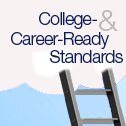For decades, as wealthy parents invested more and more time and money on enrichment for their young children, students in poverty fell further and further behind.
New research, however, suggests that the trend is changing: The children starting their first days of kindergarten may arrive better prepared than prior generations—and students in poverty will arrive at less of a disadvantage compared with their wealthier peers.

Income and racial gaps in school readiness closed significantly between 1998 and 2010, according to studies in a special issue of AERA Open, a journal of the American Educational Research Association.
Researchers Sean F. Reardon of Stanford University and Ximena A. Portilla of the research firm MDRC compared data for nationally representative samples of more than 40,000 children who started kindergarten in 1998, 2006, and 2010. They found that during that period, children from both the poorest 10 percent of families and those from the wealthiest 10 percent of families improved in early-reading and -math assessments--but students in poverty made larger improvements. As a result, poor students closed academic gaps with wealthy peers by 10 percent in early math and 16 percent in early reading.
“I think what’s surprising is that the income gap has narrowed ... when some of the underlying conditions--growing income equality and residential segregation--have continued unabated,” Reardon said.
Racial gaps also narrowed during the same time. Hispanic students reduced their readiness gap with white students by 14 percent. The school-readiness gap between black and white students also stopped widening, though the study was not able to determine whether it had closed significantly. However, the students’ teachers reported 30 percent smaller gaps between black and white students on measures of students’ self-control and positive approaches to learning.
Poor students kept their gains at least through 4th grade, according to reading and math results from the National Assessment of Educational Progress, but the gaps did not continue to close after children entered school, Reardon noted.
The closing academic gaps, he said, are “not because schools are getting more equal, but because something in early childhood is becoming more equal,” Reardon said. “It would be great if you could have both, but we do have one.”
That equalizer appears to be parents themselves, Reardon and his colleagues found.
Rising Parent Involvement
From the national Reading is Fundamental push to the First Five California effort, public-awareness campaigns in the past decade have focused on teaching parents and early-childhood educators about evolving research on how very young children learn.
“In general, what we’re learning is parents are getting the message that these early years are important,” said Rebecca Parlakian, the senior director of programs at Zero to Three, a nonprofit early-education-advocacy group, who was not associated with the studies. The group recently found 97 percent of parents believe the preschool years as a critical time for learning and brain development. “I see it as a positive sign.”
Young children in general—and poor children in particular—are getting more enriching attention from their parents and using a wider array of free educational resources, finds a related study in the same issue.
Daphna Bassok, an associate professor at the University of Virginia’s Curry School of Education, and her colleagues tracked the home and school experiences in the same group of children that Reardon studied, participants in several long-term federal education surveys.
“Parental investments have gone up quite a bit,” Bassok said. “Parents are more likely to report reading to their kids, playing with their kids, taking them on outings to the library or the zoo.”
Low-income parents were about twice as likely in 2010 as in 1998 to say their preschoolers used computers for learning and to access the internet. That could be a sign that the “digital divide” caused by earlier use of technology among wealthier families is starting to equalize, Reardon said.
Bassok noted that a growing number of free computer applications and public-television children’s shows, such as the Ready to Learn initiative, are used by parents at all income levels.
The gaps remain daunting in spite of the progress. “We also have to remember: What it means to be prepared for school is a moving target,” Parlakian said. “Would I have been prepared for kindergarten today? No. Because the expectations for kindergarten have changed dramatically.”
Earlier University of Virginia research showed dramatic changes in the typical kindergarten classroom:

School readiness gaps between poor and wealthy students closed only about half as quickly as they opened in the 1970s and 1980s. If they continue to close at the current rate, it could be another century before poor and wealthy students start school equally prepared.
Video: Sean Reardon discusses the implications of a closing kindergarten-readiness gaps. Source: American Educational Research Association.
Chart Source: Education Week, University of Virginia.
Related:
